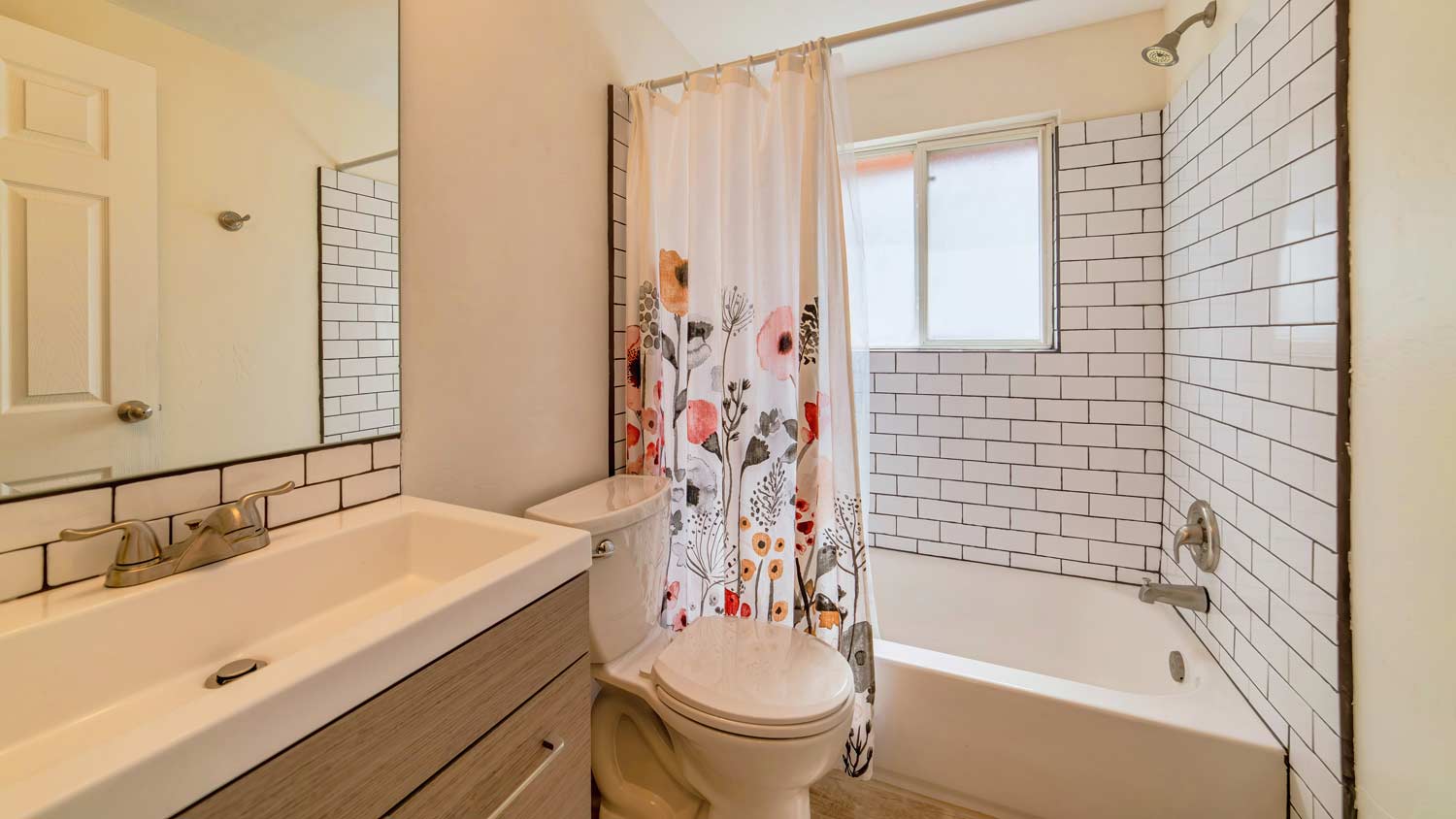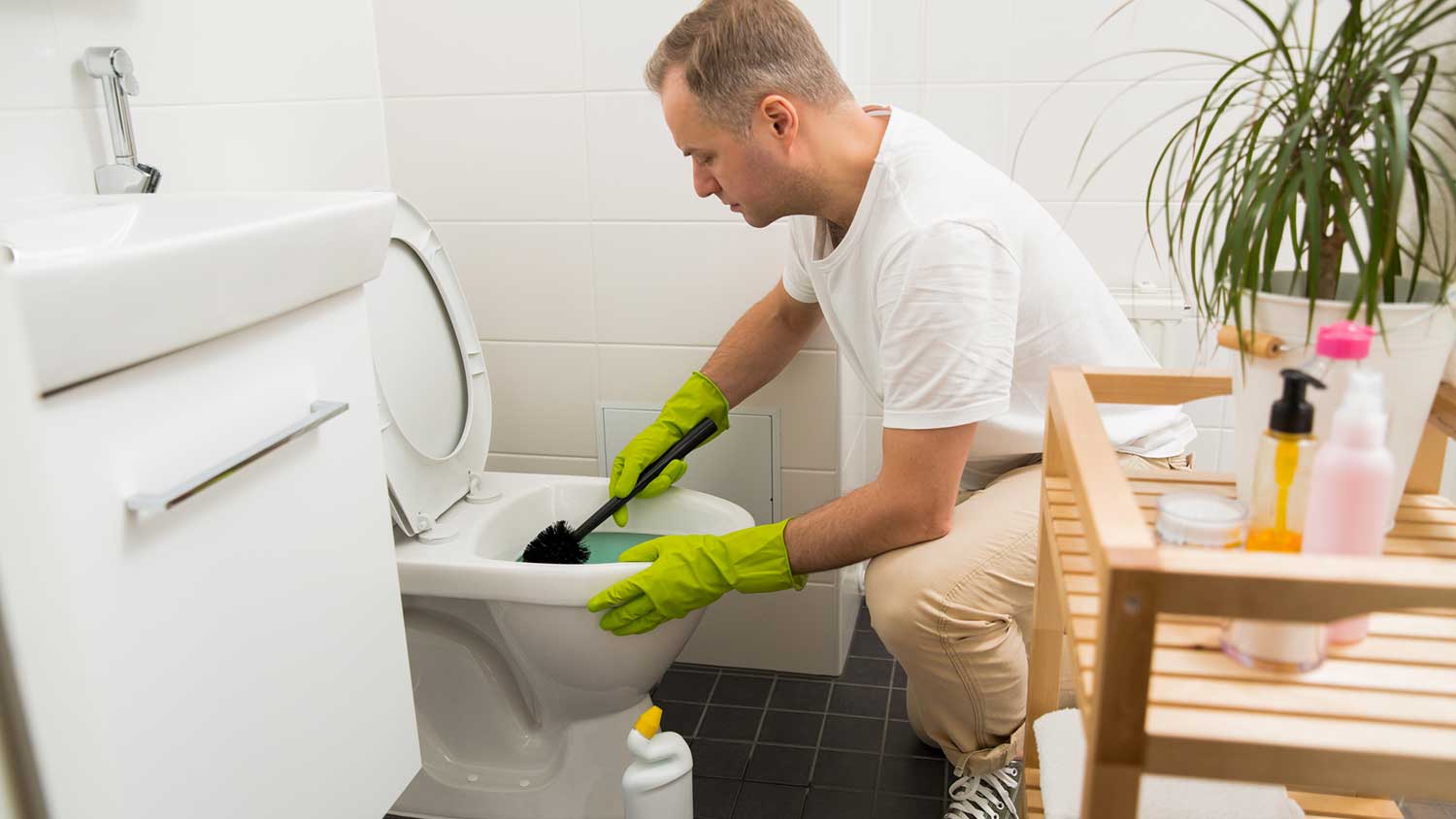Is a Mold Problem in Your Home Making You Sick?
Know the warning signs of hidden mold to keep you and your family safe


Mold is a fungus that spreads through invisible spores.
Household mold flourishes in moisture-rich environments, such as laundry rooms, bathrooms, and basements.
Exposure to mold spores can cause allergy-like symptoms in many people.
Individuals with certain health conditions might be more susceptible to mold-induced symptoms.
Removal and prevention are highly effective in mitigating the risks posed by household mold.
Mold is one science project that you definitely don’t want in your home, but it’s a common problem because it can quickly grow on moist surfaces. The real trouble occurs when mold grows behind walls or in other hidden areas and releases spores that cause your indoor air quality to plummet. In this guide, we’ll discuss how to tell if hidden mold is making you sick and the best approach for removal so that your home is mold- and worry-free.
What Is Mold?
Mold is a fungus that thrives in cool, dark, moist conditions. Mold grows through the spread of its invisible spores that can travel some distance via air currents. In the right kind of environment that isn’t well-ventilated and contains a high degree of humidity or moisture, mold growth can visibly expand in less than a day.
There are hundreds of thousands of different types of mold, and it comes in a variety of colors, including white, black, blue, yellow, and green. A few different types of mold grow in homes, and though it can appear almost anywhere, the common factor in mold growth is moisture.
Mold becomes a health risk to people when they inhale its invisible spores. These spores produce a substance called mycotoxin that provokes a strong immune system response in some people, leading to some serious health risks. While many people naturally rid themselves of accumulated mycotoxins through bodily waste and sweat, other bodies can’t handle the total load. When that happens, the individual can become sick.
How Do You Know If You Have Mold?
Checking for mold could be as easy as looking around your home, paying particular attention to areas where moisture and water can accumulate. Common locations include bathrooms, basements, kitchens, and any room or area where there’s been accumulated water—for example, after a flood or water pipe failure.
If you see slimy, fuzzy, discolored, and growing patches, chances are you’ve got a mold problem brewing. Mold also has a very distinct, musty smell.
You can identify mold in a few different ways:
Through visible inspection of your home
Through an air quality test
By identifying signs of mold exposure in you or your family
Materials and Structure
Mold eats organic materials like wood, fabric, and paper. Certain materials in your home are particularly susceptible to mold deterioration, including:
Wallpaper
Drywall
Carpet
Wooden studs
Ceiling tiles
Floorboards
If you don’t catch it in time, mold can cause your ceilings, walls, and floors to collapse as it eats away at the materials.
To identify mold growth on the building materials in your home, you’ll have to conduct an inspection. Unfortunately, mold can grow in hidden areas, like behind walls and inside your HVAC vents, so you might need to go to additional lengths to find the source.
HVAC System
It’s fairly uncommon for a home’s air ducts to be the site of a mold colony. However, if anyone is experiencing an uptick in any allergic response, asthma symptoms, or other breathing difficulties, it might be a good idea to check your air duct system for mold.
When mold gets into your ductwork, it can be difficult to remove, and it can spread more quickly into other areas of your home when the system runs. If you suspect mold in your ducts, you should stop running your system and schedule an air duct cleaning immediately. Air duct cleaning costs about $380.
You can also conduct an air quality test in your home to see if the circulating air is contaminated. This test totals around $420.
Signs of Hidden Mold
Since mold more often grows in dark, hidden areas in your home, you’ll more often have success looking for related signs and symptoms than you will searching for the actual mold growth. Below are some of the most common signs that you may have a moisture and mold issue in some area of your home:
Water stains or water damage on drywall, exposed studs, or other building material
Peeling or bubbling wallpaper or paint
An unexpected increase in utility bills; this could be a symptom of increased humidity, which supports mold growth and causes homeowners to demand more from their HVAC systems
Musty odors in your living space or basement
Unexplained allergic reactions, including runny nose, sneezing, coughing, or itchy eyes
Respiratory issues, including trouble breathing or chest pain
Discoloration on bathroom tiles, underneath kitchen or bathroom sinks, or in your utility room
Spongy flooring, which is usually a sign of high moisture content, a precursor to mold growth
Sagging or drooping insulation in your attic
An unexpected increase in water consumption, which could be the result of a burst pipe or pinhole leak. This provides moisture that promotes mold growth and demands water damage cleanup
A failed indoor air quality (IAQ) test
Symptoms of Mold-Induced Sickness
If your house is experiencing mold growth, don’t panic. While mold can make you sick, the mere presence of mold doesn’t necessarily mean you and your family will experience health problems. However, it’s also true that touching or inhaling those invisible mold spores can cause a range of unpleasant physical symptoms. Those symptoms tend to mimic allergic reactions and include:
Congestion and increased sinus drainage
Coughing and sneezing
Irritation of eye and nasal tissues
Visible skin rashes
Headaches
Lung irritation and wheezing
Sore throat
Individuals with certain pre-existing conditions like asthma and compromised immune systems might be at a higher risk for mold-induced symptoms such as the above. If you notice any of these symptoms in yourself or a family member, you should consider it a possible sign of hidden mold and call in a professional for an inspection and remediation.
Finally, the health risks that mold exposure causes can be cumulative. The more mold you inhale or are exposed to, and the longer you’re exposed to it, the more severe your body’s response can be. Massive exposure generally takes place in a workplace setting, not in your home. However, you should address even small amounts of household mold promptly.
How Can You Prevent Household Mold?
Thankfully, some precautions and proactive measures can all but eliminate the risk of hidden mold growth in your house. One of the best things you can do is to get a home inspection done annually to check for the presence of mold and other issues that can promote mold growth, like leaky pipes. Below is a quick list of things you can do to avoid mold problems in your home:
Use dehumidifiers and air conditioners to lower your home’s humidity. Replace filters at least as often as the manufacturer recommends.
Periodically check around the base of refrigerators, washing machines, and dishwashers to check for leaks every quarter. Also, make a habit of visually inspecting your basement for signs of mold.
Monitor your water meter or water bills. If there are any signs of increasing consumption that you can’t explain, get a plumbing inspection completed to find any leaks.
Repair any water leaks quickly. Dry out any areas that have seen excess water with strong fans and open windows for additional ventilation. Remember to treat the source of the issue as well.
Improve the ventilation throughout your home, especially in areas prone to moisture like bathrooms and laundry rooms.
Fix or replace windows that don’t provide a strong seal against outside moisture.
Take carpeting and non-washable rugs out of moisture-prone rooms to prevent carpet mold after water damage, including kitchens, basements, laundry rooms, and bathrooms. In the same vein, make sure damp towels and washcloths are removed from these areas and laundered promptly.
Install vent fans in every bathroom, and make sure you and your family use them during and following showers. It’s a good idea to install a fan timer switch to make it easy to remember.
Install a dedicated dehumidifier in any exercise areas, especially if they’re in your basement. Run the dehumidifier while the space is in use.
Maintain your gutters and drains, and schedule a gutter cleaning at least annually. This will help prevent gutter overflow, which can cause leaks through windows and foundations.
Clean your home regularly, keeping an eye out for water leaks and signs of mold.
Dry all fabric thoroughly before storing it, especially towels.
Open your windows regularly to allow air circulation.
Use a range hood fan while cooking.
DIY Mold Removal
In some circumstances, you can eliminate household mold yourself. Wear protective gloves and an N-95 respirator or face mask, as well as safety goggles or glasses to protect yourself from any fumes and mold spores. Open a window in the room, if possible, to increase the room’s ventilation. Use a stiff cleaning brush to scrub the affected surface thoroughly.
You can use either commercially-available products or soap and hot water. Alternatively, you can make your own bleach solution, adding 8 ounces of bleach to 1 gallon of water. Mix the bleach solution well and use it within a day. You should dispose of any excess bleach solution by flushing it down a toilet or pouring it down a kitchen sink drain. However, if you dispose of it through a sink drain, run clean water for a few minutes afterward. This will ensure that no bleach remains in the U-bend of your sink pipes.
If the mold-affected surface is porous (e.g., carpet or upholstery), you may be better off simply getting rid of that material altogether. Clean the surrounding surface thoroughly using the above process before you replace the porous material.
When to Get Professional Help for Mold Removal
In many cases, a DIY approach isn’t advisable. If you’re dealing with a Stachybotrys (or black mold), you’ll definitely want to leave the removal and clean-up to a professional. Other reasons you may want to consider professional removal include:
You simply don’t feel comfortable exposing yourself to the mold for the time it would take to clean it up thoroughly.
You have a higher degree of risk for mold-induced illness.
You discovered a previously hidden mold infestation that’s hard to reach, possibly after experiencing some serious water damage following a leak or flood.
You believe you have a mold issue but are unable to locate the source.
The mold covers multiple surfaces in your home or covers more than two square feet of a single surface. This would be considered a serious mold issue and demands professional remediation.
You tried DIY mold removal but are still noticing symptoms of a continuing issue.
Even if you do feel comfortable tackling your mold issue yourself, we still recommend that you call a local mold inspector and remediation specialist to get the job done correctly the first time. A professional will be able to conduct additional testing after the remediation is complete to ensure the issue was actually solved, and they can use special tools and techniques to identify areas of mold growth that you might miss. Especially since mold is a threat to your family’s health, calling a pro is always a good idea.















